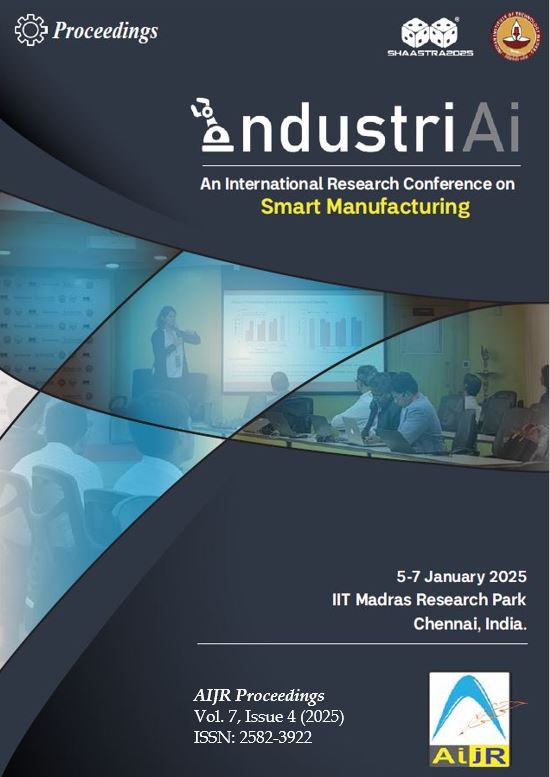Smart Pharma TwinNet: AI-Driven Digital Twin Networks for Smart Pharmaceutical Manufacturing with Industrial IoT
DOI:
https://doi.org/10.21467/proceedings.7.4.7Keywords:
Digital Twin, Artificial Intelligence, Industrial IoTAbstract
The pharmaceutical industry faces unique challenges, including strict regulatory demands, complex production processes, and the need for precise quality control. This research introduces Smart Pharma TwinNet, a system that uses AI-powered digital twins and Industrial Internet of Things (IIoT) technology to make pharmaceutical manufacturing more efficient, adaptive, and intelligent. A digital twin is a virtual model of a physical asset that updates in real time with data from sensors and other sources. In Smart Pharma TwinNet, digital twins monitor equipment health and predict potential breakdowns, helping manufacturers perform maintenance before issues occur. This predictive maintenance approach reduces unexpected downtime, lowers costs, and extends the life of expensive machinery. Smart Pharma TwinNet also improves quality control by allowing real- time monitoring of production conditions, which helps catch any issues early and ensures consistent product quality. Additionally, the system promotes resource optimization by reducing waste and energy use, supporting a more sustainable manufacturing process. This paper discusses the design and technology behind Smart Pharma TwinNet, including the IIoT and AI tools used to build a network of digital twins. Our experiments show that this approach enhances production efficiency and accuracy while creating a scalable and sustainable solution for the pharmaceutical industry.
References
[1] M. Tao, et al., “AI-Driven Quality Control in Pharmaceutical Production,” Journal of Manufacturing Systems, vol. 45, pp. 125–134, 2021.
[2] H. Kagermann, “Industrie 4.0: Mit dem Internet der Dinge auf dem Weg zur 4. industriellen Revolution,” VDI Nachrichten, 2011.
[3] R. Raj, “Predictive Maintenance and IIoT Applications in Smart Manufacturing,” IEEE Transactions on Industrial Informatics, vol. 15, no. 2, pp. 1260–1270, 2020.
[4] J. Lee, B. Bagheri, and H. A. Kao, “A Cyber-Physical Systems Architecture for Industry 4.0-Based Manufacturing Systems,” Manufacturing Letters, vol. 3, pp. 18–23, 2015.
[5] M. Grieves, Digital Twin: Manufacturing Excellence through Virtual Factory Replication, 2014.
[6] K. Zhou, T. Liu, and L. Zhou, “Industry 4.0: Towards Future Industrial Opportunities and Challenges,” International Journal of Production Research, vol. 53, no. 13, pp. 480–497, 2015.
Downloads
Published
Issue
Section
License
Copyright (c) 2025 M Shivaraj (Author)

This work is licensed under a Creative Commons Attribution-NonCommercial 4.0 International License.

